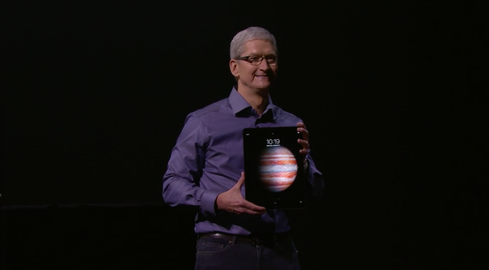iPhone 6s: 5 Features Apple Left OutiPhone 6s: 5 Features Apple Left Out
The iPhone 6s and 6s Plus may be the most compelling "S" upgrades Apple has ever created, but they still lack common smartphone features.


iPhone 6S, iPad Pro, TV, Watch: Apple's Fall Lineup
iPhone 6S, iPad Pro, TV, Watch: Apple's Fall Lineup (Click image for larger view and slideshow.)
Apple did a bang-up job with the iPhone 6s and 6s Plus. The new smartphones represent a significant step forward from the previous generation, which is not something you can say about every S-branded iPhone.
For example, the big upgrade from the iPhone 5 to the iPhone 5s was a fingerprint sensor and some internal spec bumps. Not all that exciting. Apple moved the needle much further forward with the 6s and 6s Plus.
The 3D Touch display alone, which calls up secondary menus and actions based on how firmly the user presses the screen, increases the appeal of Apple's latest handsets by leaps and bounds. The 12-megapixel camera with 4K video capture boosts the drool factor, too, as does the user-facing flash. Toss in the A9 processor and CAT 6 LTE and you have a much more powerful smartphone in the 6s and 6s Plus.
[Read all the coverage from Apple's Sept. 9 event.]
As always, however, Apple left a few items in the kitchen sink for future devices. Here are things that Apple could have added to its new iPhones, but didn't.
Quick Charge: Nearly every flagship handset in the market supports rapid charging. Qualcomm's 800-class Snapdragon processors have included QuickCharge for years, and the current QuickCharge 2.0 spec lets many devices reach a full charge in 90 minutes or less. Apple's devices don't support rapid charging, which means users have to wait longer to recharge their phones.
Wireless Charge: The iPhone 6s and iPhone 6s Plus don't support wireless charging, either. Wireless charging is another technology that's been around for years. Samsung's new Galaxy Note 5 and S6 Edge+ phones support rapid wireless charging and can go from 0% to 100% in less than two hours when placed on a Samsung charging pad. Wireless charging is merely a convenience, but it's one Apple might consider adopting eventually.
NFC: The iPhone 6 and 6 Plus added an NFC radio to support Apple Pay. The iPhone 6s and 6s Plus also include NFC, but it is still limited to use only with Apple Pay. Most high-end Android handsets include NFC and support a range of profiles and uses for the short-range radio technology. For example, it's quite easy to pair the new Moto X with Bluetooth accessories by tapping the phone to the wireless speakers or headsets. Many were hoping Apple would expand the usefulness of the iPhone's NFC radio. Alas, it has not.
2K or 4K Display: Apple's 2015 iPhones carry over the size and resolution from the 2014 iPhones. That means the iPhone 6s has a 4.7-inch screen with 1,334 by 750 pixels, and the 6s Plus has a 5.5-inch screen with 1,920 by 1,080 pixels. Samsung's Galaxy S6, S6 Edge, Note 5, and S6 Edge+ all have quad HD screens, which push the resolution to 2,560 by 1,440 pixels. LG, Motorola, and Sony all have flagship devices with 2K screens. Sony recently announced a smartphone with a 4K screen, or 3,840 by 2,160 pixels. Pixels aren't everything, but the iPhones could use some more.
Enough Storage: Like the iPhones 5, 5s, and 6 before it, the entry-level iPhone 6s has just 16GB of storage on board, of which only 12GB or so is available to users. That's pathetic and downright hostile toward customers. Most competing flagship handsets offer at least 32GB of storage, and many also support removable memory cards. Think about the camera for a moment. The 12-megapixel camera on the iPhone 6s will shoot larger files than the iPhone 6 could. Moreover, people who shoot 4K video will see their precious storage disappear swiftly. By offering only 16 GB at the low end, many iPhone buyers will upgrade to the 64GB model -- therein giving Apple $100 more and helping further pad the coffers of the world's richest company.
About the Author
You May Also Like






